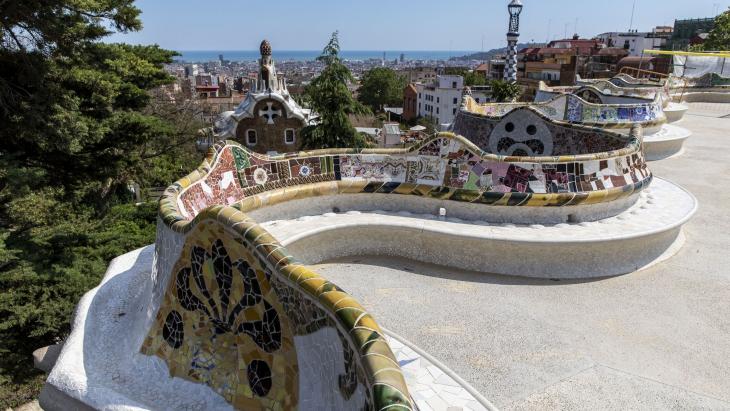Points of interest in the city
Gaudí at his most secret

The least-known works of an architectural genius
If there is one architect that everyone associates with Barcelona, it has to be Antoni Gaudí. His mature works, such as La Pedrera, Park Güell and the Sagrada Família, are world-famous icons that attract thousands of visitors every day. But there are other works by this artistic genius that are not so well known and which are hardly noticed, being far removed from the beaten track and located along a little explored route no but less spectacular for that.
Les Corts' protecting dragons
The elegant Palau de Pedralbes, near Avda Diagonal in Les Corts, hides away one of Gaudí's most secret works in the city. That is the Hercules Fountain in the gardens partially designed by Gaudí in his first architectural venture with Eusebi Güell, who would become his main patron. Before it become the Palau Reial, the site had been part of a private estate, the Finca Güell, whose entrance today is on Avinguda de Pedralbes. Between 1884 and 1887 Gaudí designed the entrance gate and two pavilions. These are two different places today, but there is an inseparable link between them, as Gaudí recreated L’Atlàntida, a poem by the priest Mossèn Cinto Verdaguer, at the complex.So the fountain paying homage to the hero leads up to an entire mythological universe that opens out beyond the colourful gate houses, known as the Güell Pavilions, which are protected by an impressive wrought-iron dragon watching over the site, like a creature from the Garden of Hesperides.
Fantastic castles and houses
From there the route enters Sarrià where, on Passeig de Manuel Girona, there still stands a wavy-shaped gateway that once led into the Finca Miralles, a private estate which has since disappeared. The gate, built in 1901, is probably Gaudí's least-known work in Barcelona, but it is worth a visit because it has all the outstanding features of Gaudí's architecture: the white trencadís fragments on the wall, reminding you of a reptile's skin, with a lobed arch covered by a canopy, topped by a three-dimensional cross. What is more, a statue of the architect has part of the site since 2000.
At the top end of the Sarrià Sant-Gervasi district, in the foothills of Collserola, the magnificent Torre Bellesguard brings a Gothic castle to mind with its merlons, but the wrought iron features and coloured mosaic make it easy to identify who was behind it. Gaudí designed it at the beginning of the 20th century as a private residence, only too aware that it was a historical site: the spot where the remains of the medieval castle belonging to Martin the Humane had been found.
To find one of the first of Gaudí's big projects in the city, you will need to jump district and enter the top part of the old Vila de Gràcia. There you will find the Casa Vicens, a house built in a style with clear oriental influences, between 1883 and 1888, whose floral tiles covering the facade betray the architect's love of nature.
To finish the route, you have to go into Sant Andreu. There, at the Sant Pacià parish church, you can see one of Gaudí's first-known works. That is the church flooring, a Roman mosaic with very elaborate borders. Completed around 1879, the work corresponds to Gaudí's his first period, before he developed his peculiar Modernista style, when he was attracted to Neo-Gothic works such as this.


